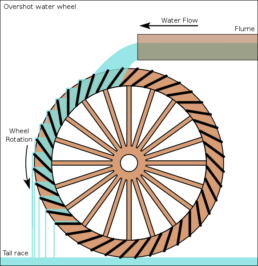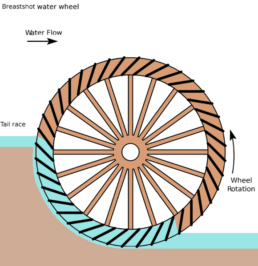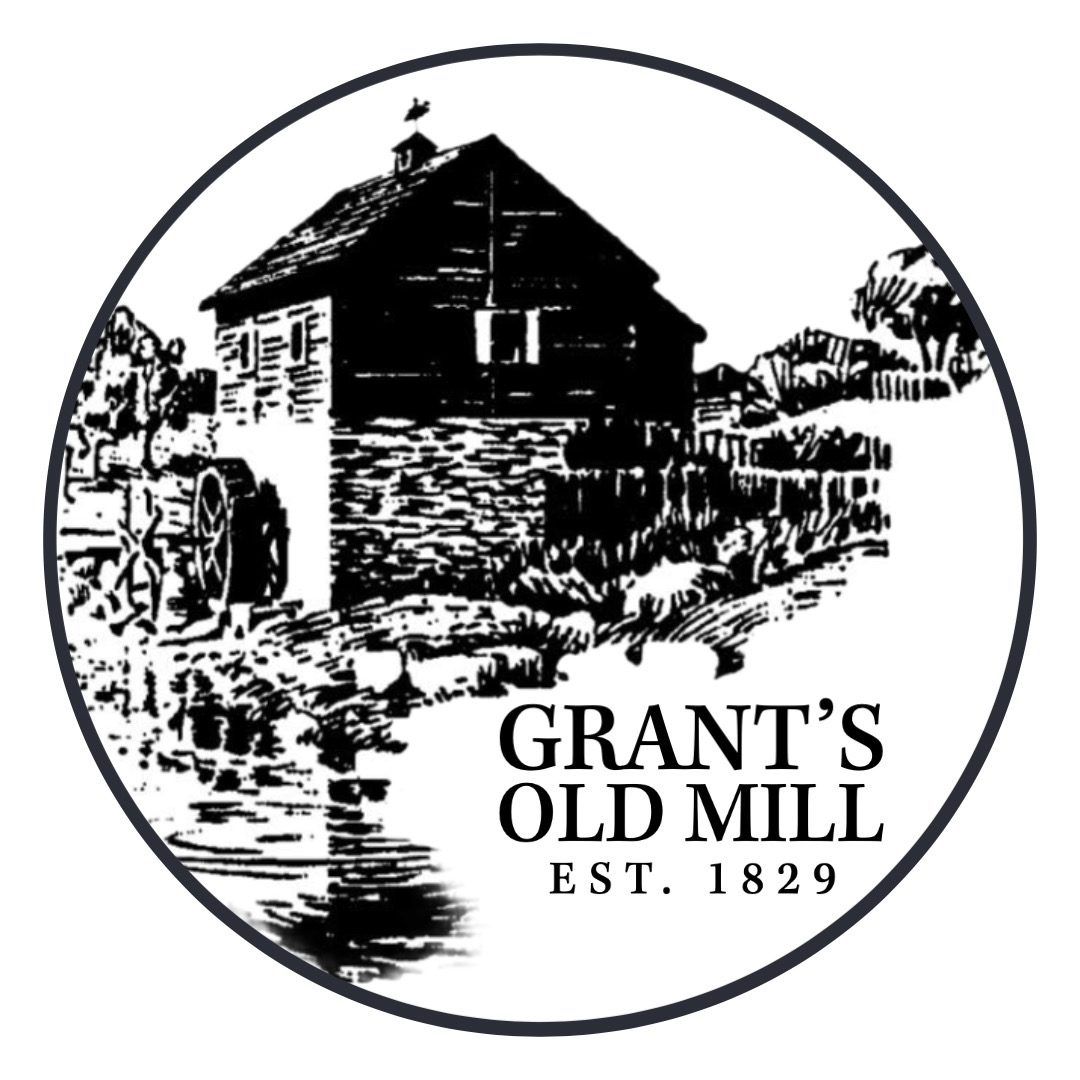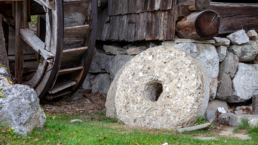Grist Milling 101
Gristmills turned by water have been around for many centuries, some as early as 19 BC. Although the terms “gristmill” or “corn mill” can refer to any mill that grinds grain, the terms were used historically for a local mill where farmers brought their own grain and received back ground meal or flour, minus a percentage called the “miller’s toll.”
There are three major parts to a gristmill: the raceway, water wheel, and grinding stone.
The raceway channels the flowing water to the wheel. The water forces the wheel to tum. The turning wheel powers the grinding stones by a series of shafts and pulleys, or gears and shafts. The grinding action of the stones breaks the grain into small, usable pieces like flour, cornmeal, and grits.
There are many types of water wheels that were used, such as an undershot wheel, an overshot wheel, or a breast wheel.
The undershot wheel was the least efficient and looked like a great paddle wheel. It was simply propelled by the flowing water pushing on its blades. Grant’s Old Mill is considered an undershot.
The overshot wheel was much more effective and took more careful planning and placement. Water was directed to the top of it, and it had blades that were more like buckets or troughs to catch and hold water. At the very least its blades were slanted rather than set perpendicular to the wheel. The weight of the water was the driving force and it built up momentum as it turned. It needed to be placed so that it was never in the stream as the motion of flowing water would slow its momentum.
Breast wheels were another type that had the water directed at about 1/2 the way towards the top of the wheel. It did better than an overshot wheel if water levels rose as it would not be drastically slowed by the water flow and was often used where it would be too difficult to use the more efficient wheel. It was halfway between the two previous types.



Want to see a water-powered grist mill in action?
Come down to Grant’s Old Mill. We’d love to show you!
If you found today’s blog post to be exactly the type of historical infotainment you were looking for, we would be very grateful
if you would help this post spread by sharing the LOVE with it socially, emailing it to a friend, or dropping us a comment with your thoughts.
We’re always interested in hearing from you and … You never know whose life you might change.
To learn more about grist mill history (1800s):
Click the button below to check out the full heritage and story of water-powered grist mills continuing from where we left off above, rolling into “Part of a Water Mill” (Sliuce gates controlling the flow of water to the wheels, etc.).
To learn about more mill history (Cuthbert Grant):
Click the button below to check out our “Infotainment” page where you can learn more about water-powered grist mills in Manitoba and a bit more history about Cuthbert Grant, as well as what else is going on at the Grant’s Old Mill.
GRATEFULLY ACCEPTING DONATIONS
Make History Long-Lasting ... Donate Today!
The Grant’s Old Mill Museum is gratefully accepting donations of money from the public and volunteer community. Allocations go to:
(1) A specific Grant’s Old Mill museum project / event;
(2) In memory of someone special in your life; and/or
(3) General revenue to keep the museum open
Please accept our heartful THANK YOU in advance for your generous gift.
We are thrilled to have your support. You truly make the difference for us, and we are extremely grateful!

